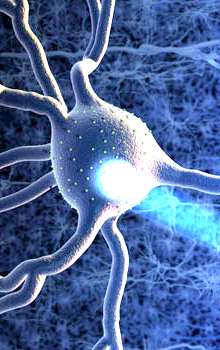Brain boost brought about by beam for babies
 A recent test has suggested that a focused ultrasound beam can improve sensory awareness.
A recent test has suggested that a focused ultrasound beam can improve sensory awareness.
Ultrasound imaging has been used in nature by whales, bats, and even praying mantises for millennia, as well as more recently by humans to check on the health of an unborn baby. Quite likely the next big application for the technique will be in enhanced imaging of the human brain’s intricate connectivity.
Ahead of using ultrasound as a way to capture the state of the brain, a team from the Virginia Tech Carilion Research Institute has had an experimental look at its effects on the region of the brain responsible for processing tactile sensory inputs.
Researchers delivered focused ultrasound to an area of the cerebral cortex which processes sensory information from the hand. To stimulate the appropriate nerve, a small electrode was placed on the wrist of human volunteers to record their brain responses using electroencephalography (EEG). Just a moment before stimulating the nerve, ultrasound was delivered to the targeted brain region.
Bizarrely, scientists found that the ultrasound both decreased the EEG signal while weakening the brain waves responsible for encoding tactile stimulation.
In a few simple subsequent tests however, subjects receiving ultrasound showed significant improvements in their ability to distinguish the distance of two points pressed against their skin, and to discriminate small frequency differences in a succession of light puffs of air against the skin.
“Our observations surprised us,” said Jamie Tyler, an assistant professor at the Virginia Tech institute.
“Even though the brain waves associated with the tactile stimulation had weakened, people actually got better at detecting differences in sensations.”
“It seems paradoxical, but we suspect that the particular ultrasound waveform we used in the study alters the balance of synaptic inhibition and excitation between neighbouring neurons within the cerebral cortex,” Tyler said.
“We believe focused ultrasound changed the balance of ongoing excitation and inhibition processing sensory stimuli in the brain region targeted and that this shift prevented the spatial spread of excitation in response to stimuli resulting in a functional improvement in perception.”
To understand just how well they could pinpoint the effect, the research team moved the acoustic beam one centimetre in either direction of the original site of brain stimulation – and the effect disappeared.
“That means we can use ultrasound to target an area of the brain as small as the size of an M&M,” Tyler said.
“This finding represents a new way of noninvasively modulating human brain activity with a better spatial resolution than anything currently available.”
Based on the combined findings of the current study and previous one, researchers concluded that ultrasound has better spatial resolution than the two leading non-invasive brain stimulation technologies — transcranial magnetic stimulation and transcranial direct current stimulation.
“We hope to continue to extend the capabilities of ultrasound for noninvasively tweaking brain circuits to help us understand how the human brain works,” said Wynn Legon, a postdoctoral scholar and author of the latest study.







 Print
Print